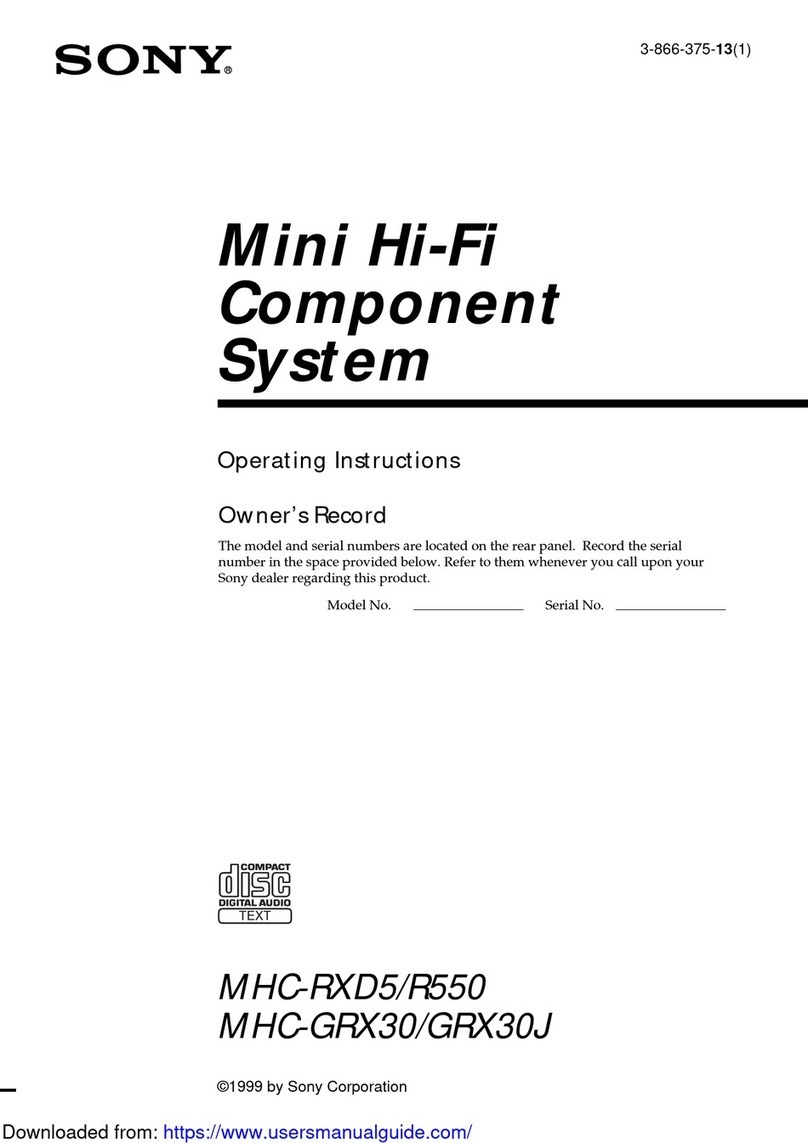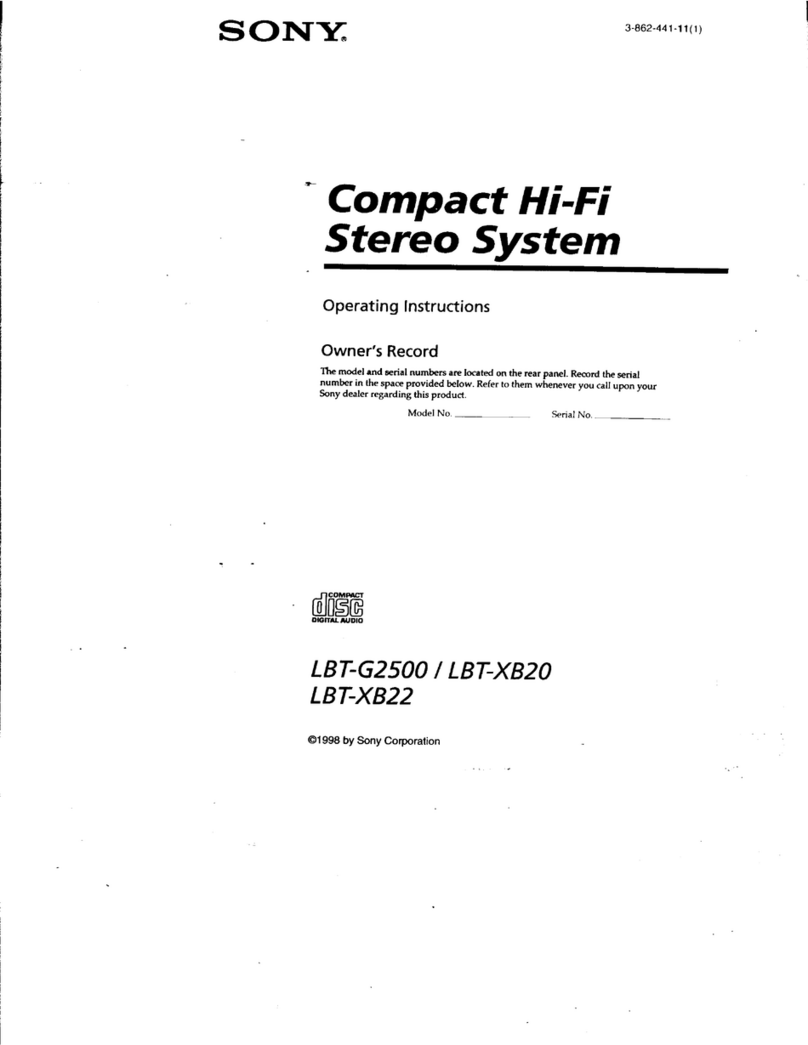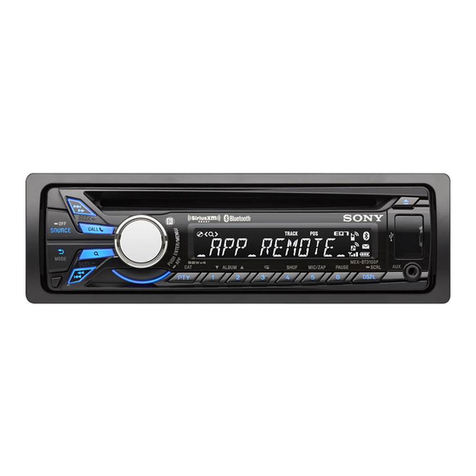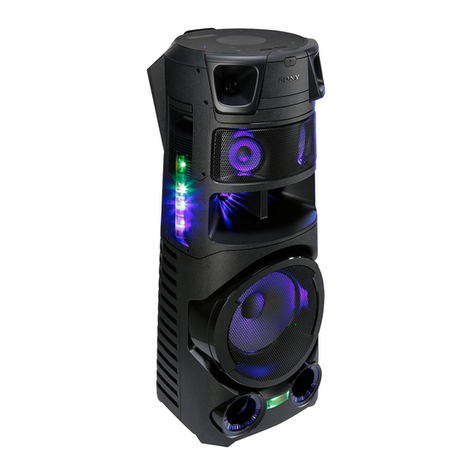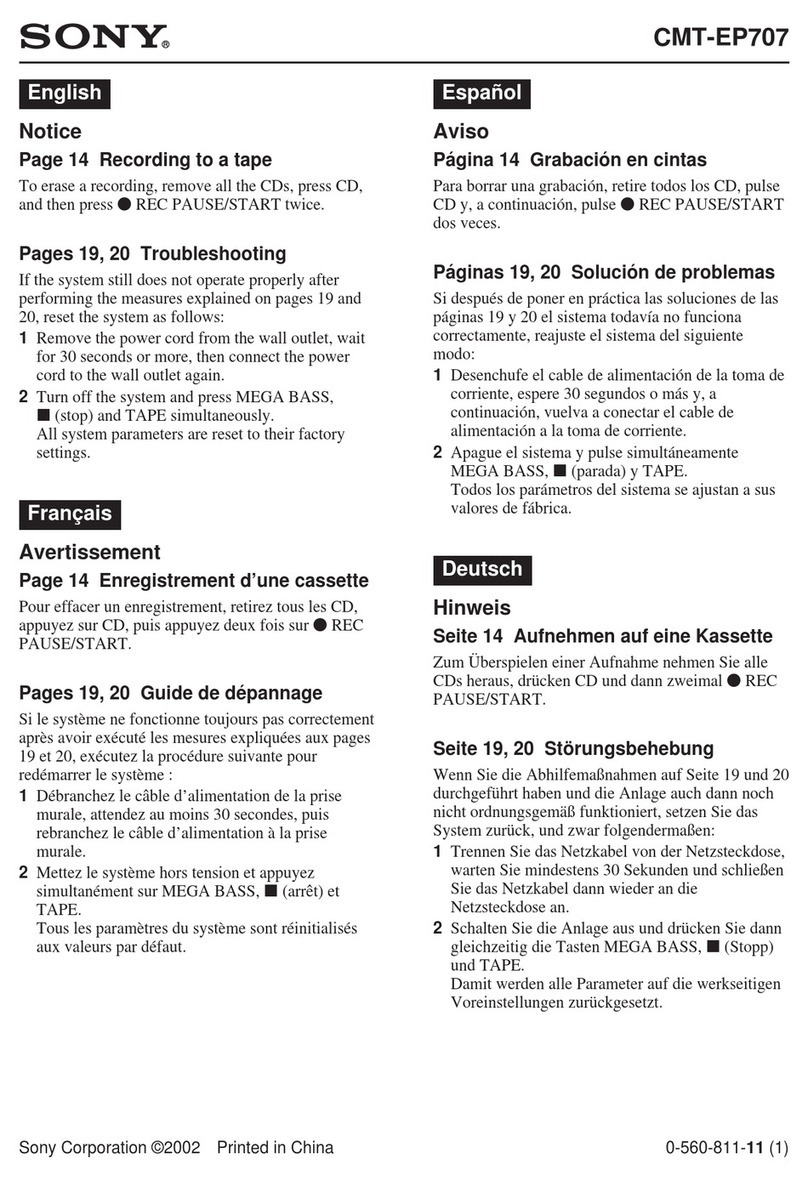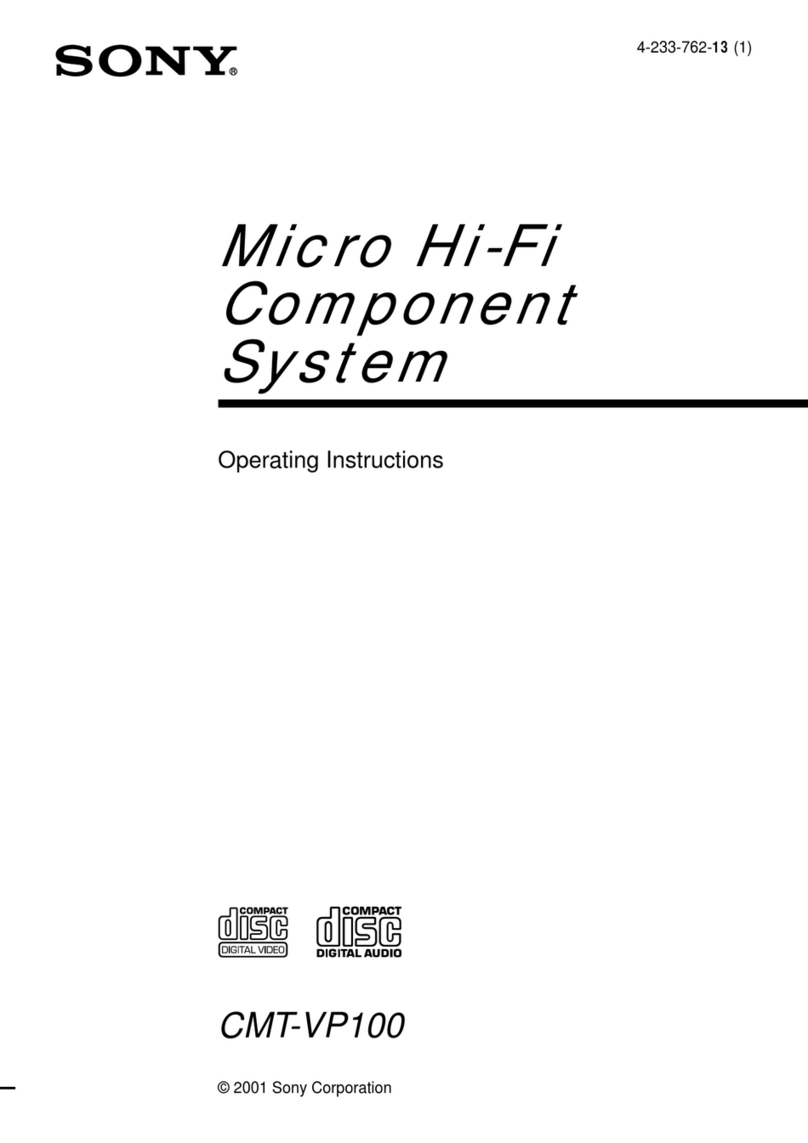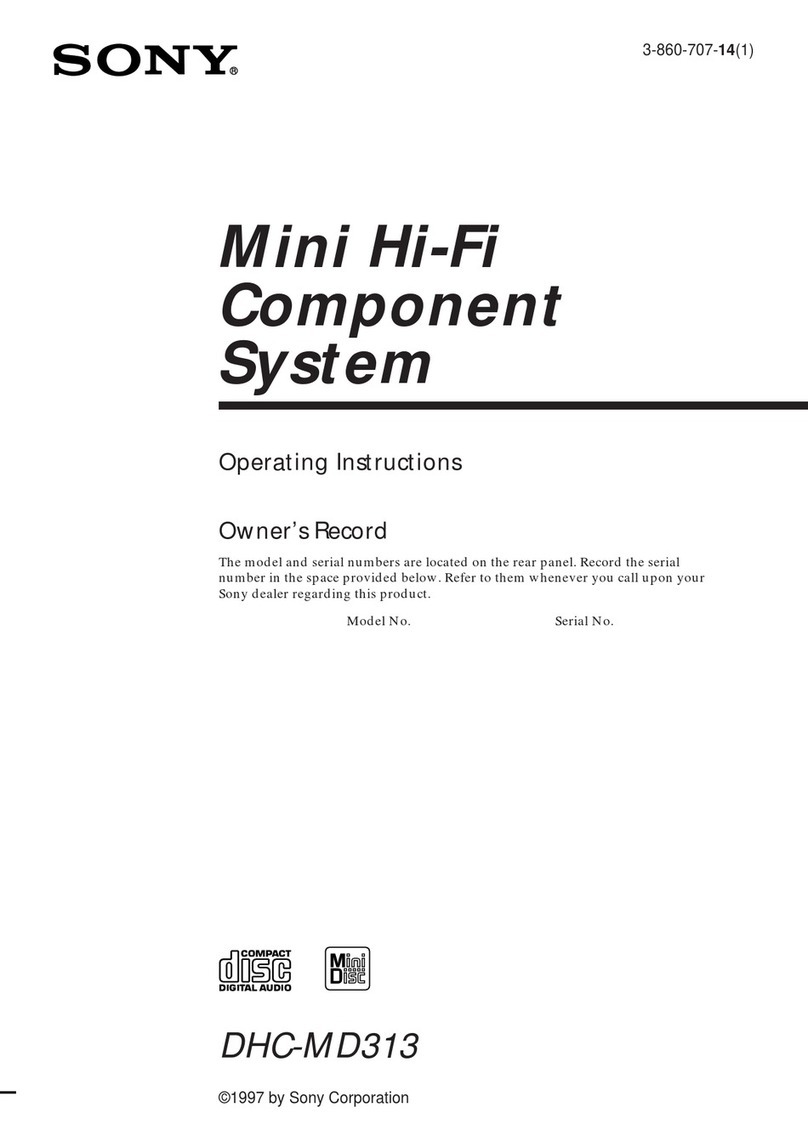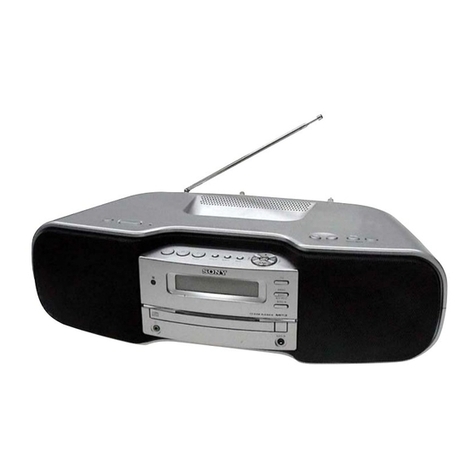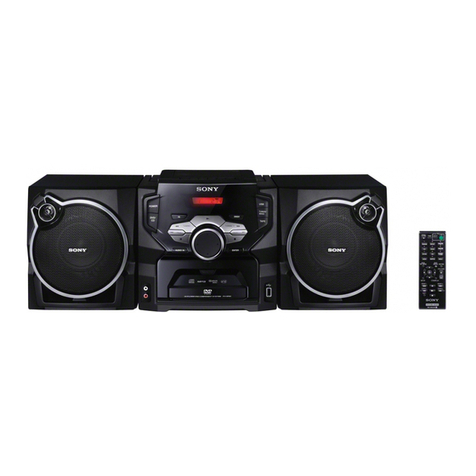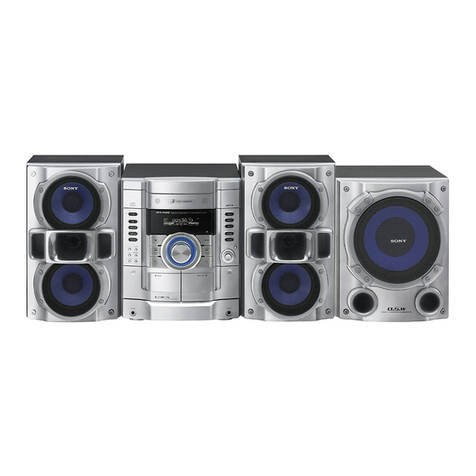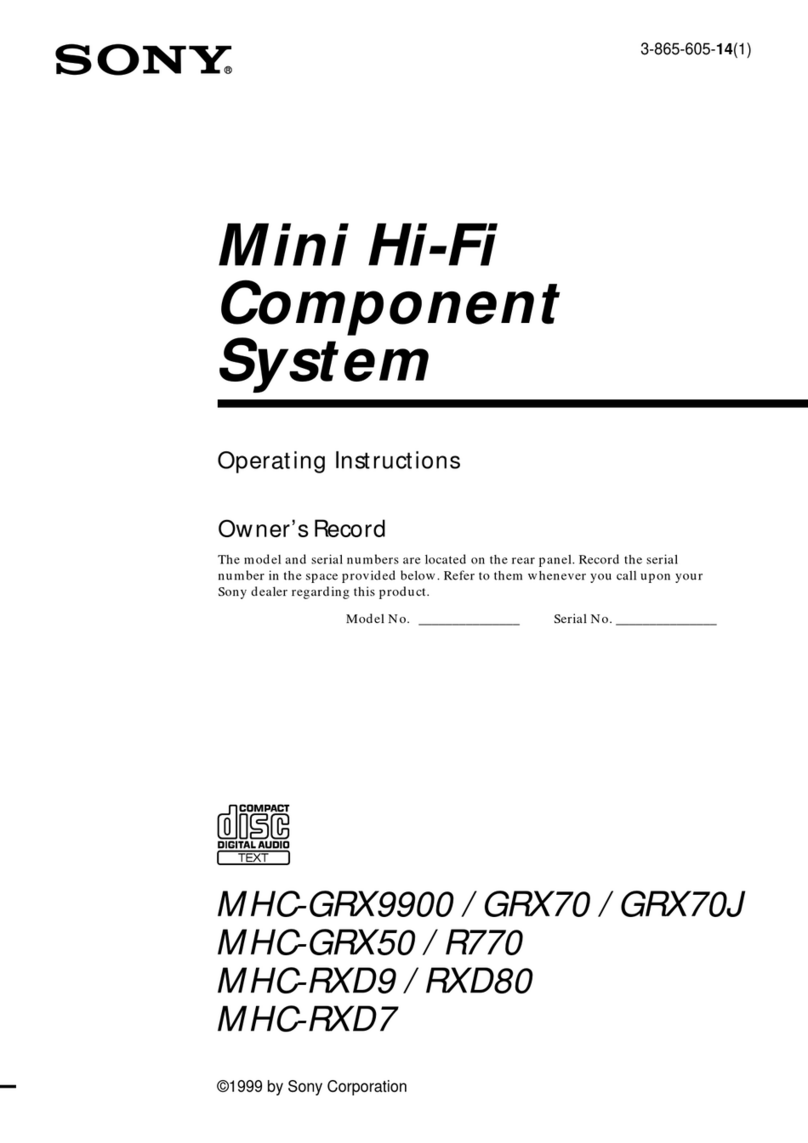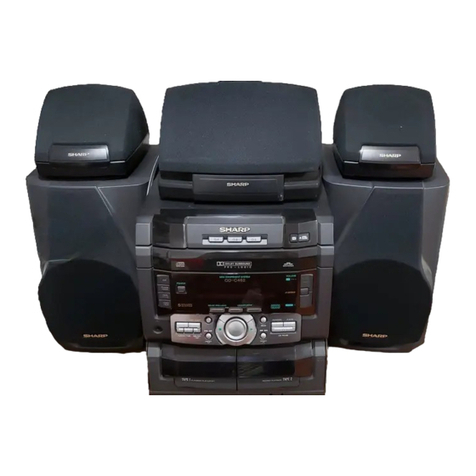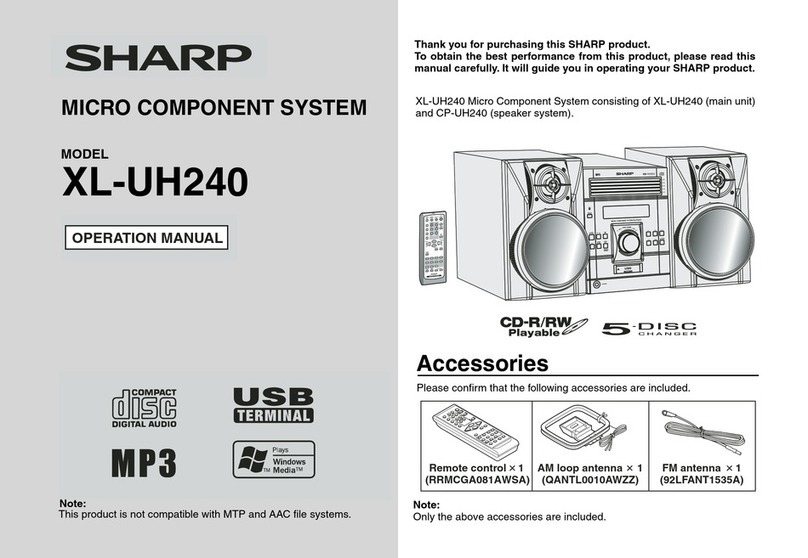
CX-JD5
5
TABLE OF CONTENTS
1. SERVICING NOTES ................................................ 6
2. GENERAL
Location of Controls ....................................................... 8
3. DISASSEMBLY
3-1. Disassembly Flow ........................................................... 9
3-2. Steel Cabinet Case .......................................................... 10
3-3. Tray Panel........................................................................ 10
3-4. DVD Mechanism Deck (CDM74-DVBU23) ................. 11
3-5. Front Panel Section ......................................................... 11
3-6. Mechanism Deck (CWM43FR16/CWM43FR26) ......... 12
3-7. Back Panel Section.......................................................... 12
3-8. MAIN Board Section ...................................................... 13
3-9. MAIN Board ................................................................... 13
3-10. I-BASS Board ................................................................. 14
3-11. FRONT AMP Board, SURROUND AMP Board ........... 14
3-12. TRANS Board ................................................................. 15
3-13. MB03 Board .................................................................... 15
3-14. VIDEO Board.................................................................. 16
3-15. DRIVER Board, SW Board ............................................ 16
3-16. Table Assy ....................................................................... 17
3-17. MOTOR (TB) Board ....................................................... 17
3-18. MOTOR (LD) Board....................................................... 18
3-19. RF Board ......................................................................... 18
3-20. Optical Traverse Unit (DBU-1) ...................................... 19
4. TEST MODE.............................................................. 20
5. ELECTRICAL ADJUSTMENTS......................... 30
6. DIAGRAMS
6-1. Block Diagram – DVD DSP (1/2) Section –................. 31
6-2. Block Diagram – DVD DSP (2/2) Section –................. 32
6-3. Block Diagram – TUNER/TAPE DECK Section – ...... 33
6-4. Block Diagram – MAIN Section – ................................ 34
6-5. Block Diagram – AMP Section – .................................. 35
6-6. Block Diagram
– DISPLAY/POWER SUPPLY Section – ...................... 36
6-7. Note for Printed Wiring Boards
and Schematic Diagrams ................................................ 37
6-8. Printed Wiring Board – RF Section –............................ 38
6-9. Schematic Diagram – RF Section –............................... 39
6-10. Printed Wiring Boards – CHANGER Section –............ 40
6-11. Schematic Diagram – CHANGER Section – ................ 41
6-12. Printed Wiring Board
– MB Section (Component Side) – ................................ 42
6-13. Printed Wiring Board
– MB Section (Conductor Side) – .................................. 43
6-14. Schematic Diagram – MB Section (1/8) – .................... 44
6-15. Schematic Diagram – MB Section (2/8) – .................... 45
6-16. Schematic Diagram – MB Section (3/8) – .................... 46
6-17. Schematic Diagram – MB Section (4/8) – .................... 47
6-18. Schematic Diagram – MB Section (5/8) – .................... 48
6-19. Schematic Diagram – MB Section (6/8) – .................... 49
6-20. Schematic Diagram – MB Section (7/8) – .................... 50
6-21. Schematic Diagram – MB Section (8/8) – .................... 51
6-22. Printed Wiring Board – MAIN Section – ...................... 53
6-23. Schematic Diagram – MAIN Section (1/4) –................ 54
6-24. Schematic Diagram – MAIN Section (2/4) –................ 55
6-25. Schematic Diagram – MAIN Section (3/4) –................ 56
6-26. Schematic Diagram – MAIN Section (4/4) –................ 57
6-27. Printed Wiring Board – I-BASS Section – .................... 58
6-28. Schematic Diagram – I-BASS Section –....................... 59
6-29. Printed Wiring Board – FRONT AMP Section – .......... 60
6-30. Schematic Diagram – FRONTAMP Section – ............. 61
6-31. Printed Wiring Board
– SURROUND AMP Section – ...................................... 62
6-32. Schematic Diagram – SURROUNDAMP Section – .... 63
6-33. Printed Wiring Boards – PANEL Section – .................. 64
6-34. Schematic Diagram – PANEL Section – ....................... 65
6-35. Printed Wiring Boards – KEY Section –....................... 66
6-36. Schematic Diagram – KEY Section – ........................... 67
6-37. Printed Wiring Board – VIDEO Section – .................... 68
6-38. Schematic Diagram – VIDEO Section – ....................... 69
6-39. Printed Wiring Board – TRANS Section – ................... 70
6-40. Schematic Diagram – TRANS Section – ...................... 71
6-41. Printed Wiring Board – SUB TRANS Section –........... 72
6-42. Schematic Diagram – SUB TRANS Section – ............. 73
6-43. IC Pin Function Description ........................................... 78
7. EXPLODED VIEWS
7-1. Case Section .................................................................... 92
7-2. Front Panel Section-1...................................................... 93
7-3. Front Panel Section-2...................................................... 94
7-4. Front Panel Section-3...................................................... 95
7-5. Front Panel Section-4...................................................... 96
7-6. Chassis Section-1 ............................................................ 97
7-7. Chassis Section-2 ............................................................ 98
7-8. DVD Mechanism Deck Section-1
(CDM74-DVBU23) ........................................................ 99
7-9. DVD Mechanism Deck Section-2
(CDM74-DVBU23) ....................................................... 100
7-10. DVD Mechanism Deck Section-3
(CDM74-DVBU23) ....................................................... 101
7-11. DVD Mechanism Deck Section-4
(CDM74-DVBU23) ....................................................... 102
8. ELECTRICAL PARTS LIST .............................. 103

